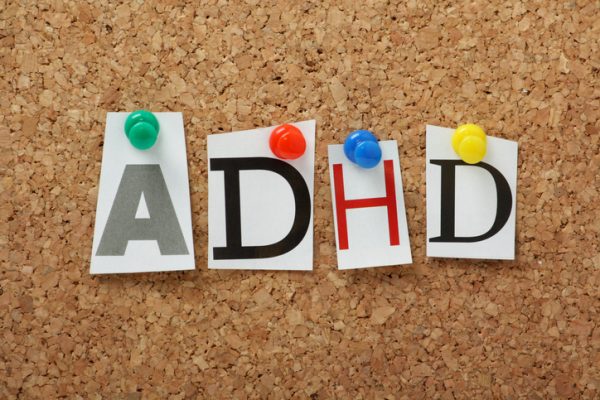
“Food is my heroin,” said Haley (a pseudonym), 28, comparing her ADHD and binge eating disorder to a drug problem. “It sounds dramatic but it’s true. As hard as I try to prevent binge it’s like driving over the same pothole that blows out your tires every day.” It’s a sentiment that could be echoed by any one of the over 30 million Americans who will experience an eating disorder at some point in their lives. It’s a feeling that is compounded with a co-diagnosis of Attention Deficit and Hyperactivity Disorder (ADHD).
Approximately 22 million Americans live with ADHD, a disorder characterized by challenges with attention regulation, impulse control, and executive function, (e.g., planning organization and managing time). These traits can complicate a person’s relationship with food. According to the National Institutes of Health (NIH) people with ADHD have up to a 12 percent higher chance of developing an eating disorder. Particularly, research confirms the association between ADHD and binge eating disorder, which shows that 26 percent of people with ADHD also had binge eating disorder behaviors, versus two percent without ADHD.
For patients, this can translate into a lifestyle that is more complex than those without either diagnosis. One patient in particular, a 35-year-old (pseudonym Alex), believed the only thing that could give him relief from the chaos of his ADHD was food. On some nights Alex might consume four hamburgers, four large french fries, a pizza, two bags of potato chips, two gallons of ice cream, and a dozen cupcakes. For over a decade, after each binge, he would tell himself that he would never binge again.

How Zelis is Transforming Healthcare Payments with Enterprise AI
How Zelis hopes to solve the healthcare financial system for payers and providers.
For Fernando (another pseudonym), 44, who struggled with bulimia and ADHD since he was 15, controlling his weight felt like his only success. For those with bulimia, food can be misinterpreted as a way to self-medicate when they experience anxiety, stress, anger, or boredom.
There are many behavioral, psychological, neurochemical, and biological factors that contribute to why people with ADHD are predisposed to developing eating disorders. Seeing treatments through the ADHD-eating disorder lens is essential and must be central to treatment.
There is a link between the two disorders
According to research from the National Library of Medicine, up to 80 percent of adult ADHD patients present with another psychiatric disorder. Although ADHD does not cause eating disorders, children and adolescents with ADHD need to be monitored for eating disorders because there is a high prevalence of disordered eating among this group.

How Lantern Delivers ROI Through Smarter Healthcare Navigation
Dickon Waterfield discusses why Lantern's navigation works.
There are some ADHD characteristics that lend themselves to eating disorders.
People with ADHD often experience emotional dysregulation which can make them more likely to use food as an emotional coping mechanism. Impulsivity, another characteristic often found in someone with ADHD, can cause inconsistent food habits and can lead to binging, skipping meals, purging and other disordered eating practices. Some people with ADHD may struggle with structured routines which could make sticking to an essential eating disorder treatment component like prescribed meal plans difficult. Finally sensory processing issues that involve a heightened sensitivity to taste, sounds, light, and other stimuli, can also affect their experience with food. These issues can lead to Avoidance/Restrictive Intake Disorder (ARFID), an eating disorder which is characterized by having a heightened sensitivity to the texture of foods and leads to a very narrow diet and inadequate nutrition.
Co-occurring ADHD and eating disorders can intensify the symptoms of each other. Impulsivity can lead to binge eating or purging and emotional dysregulation can make it challenging to cope with life’s difficulties. Addressing both ADHD and an eating disorder at the same time can best forge the path to recovery and healthy coping.
Approaches to treating ADHD and eating disorders together
Recovery is possible with the right kind of intervention and support. These strategies are part of an effective treatment program:
- Tailored meal planning – Structured but flexible meal planning helps support nutritional needs, in addition to bring a sense of balance and predictability to meals This can look like a written plan with options and flexibility built in that can be adjusted day to day based on how recovery is progressing.
- Dialectical behavior therapy (DBT) – DBT offers tools for managing emotional reactivity and impulsivity, common in both ADHD and eating disorders. DBT focuses on learning and practicing mindfulness, distress tolerance, and emotion regulation skills which can help reduce impulsive behavior around food. Practice with DBT skills and tools can benefit the whole family to help manage the unpredictability of these conditions and lead to progress in recovery.
- Cognitive behavioral therapy (CBT) – CBT helps identify and shift disordered thinking patterns and build healthier behaviors while addressing ADHD related challenges, including impulsive decision making and difficulty initiating tasks. CBT can help improve body image and self-esteem, too.
- Medication oversight – Stimulant medications used for ADHD must be carefully managed to ensure medications don’t suppress a patient’s appetite and interfere with their recovery goals. Nonstimulant medication options for ADHD should also be more strongly considered for those who have eating disorders or those predisposed to developing eating disorders. Medication regimens must be carefully coordinated with the patient’s prescribing medical resource and close communication is key.
- Executive function – Patients who build skills in planning, organization, and time management tend to have easier outcomes and lasting habits and routines.
Recovery Is possible
When eating disorders and ADHD coexist, it can be difficult, but loved ones can be a big help in recovery by creating space for open and judgment-free conversations about emotions, daily experiences and food choices. With compassion and patience, loved ones can offer support for a predictable daily routine.
Tools like visual schedules or timers can also help provide structure around meals, snacks, school, work, activities, and much needed breaks. By staying closely connected with the care team, loved ones can better understand the challenges the patient is facing and help them celebrate their progress along the way.
Tackling an eating disorder that coexists with ADHD requires desire and dedication, professional treatment and protocols, and support at home from family and caregivers. With all of that aligned, there is no reason that individuals would not be able to achieve their recovery goals and enjoy healthier lives.
Photo: Thinglass, Getty Images
Brad Smith, MD, DFAPA (he/him) is the Chief Medical Officer for Emily Program, Accanto Health, overseeing the clinical direction of The Emily Program and Gather Behavioral Health. With nearly 25 years of experience in psychiatry and medical leadership, he is dedicated to advancing high-quality, patient-centered care for individuals with eating disorders.
Board-certified in adult and forensic psychiatry, Dr. Smith has spent his career developing innovative, evidence-based treatment programs. Before joining Accanto Health, he directed clinical services at all levels of care within Eating Disorder Recovery Services at Rogers Behavioral Health. He is recognized for his leadership in improving clinical outcomes and expanding access to care for those in need.
This post appears through the MedCity Influencers program. Anyone can publish their perspective on business and innovation in healthcare on MedCity News through MedCity Influencers. Click here to find out how.







